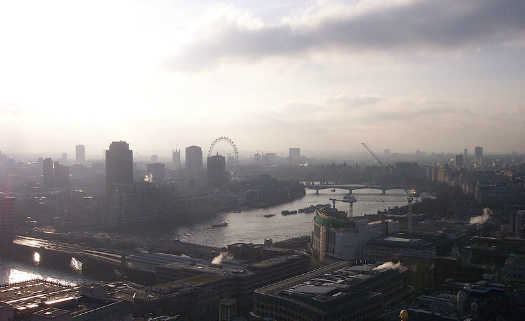What are conservation units?
Conservation Units across the country promote sustainable coexistence between society and the various ecosystems

Resized image by Debora Tingley, is available on Unsplash
Conservation Unit (UC) is how the National System of Nature Conservation Units (SNUC) (Law No. 9,985, of July 18, 2000) calls natural areas subject to protection due to their unique characteristics. They are "territorial spaces and their environmental resources, including jurisdictional waters, with relevant natural characteristics, legally established by the Government, with conservation objectives and defined limits, under a special administration regime, to which adequate guarantees of protection of the law apply" (Article 1, I).
What are protected areas
Chico Mendes, famous Amazon activist and protector, once said that he initially thought he was fighting to save rubber tappers, then he thought he was fighting to save the forest, and that he had come to the conclusion that his real fight was for humanity. The phrase denotes the seriousness with which he viewed the importance of preserving and conserving nature and makes clear the process of raising awareness of the importance that his struggle would have for future generations. His legacy would be the basis for many other battles.
- What is the Legal Amazon?
Among Chico Mendes' ideas and achievements are the "extractive reserves" and "indigenous reserves", created in the 1970s. According to the Chico Mendes Institute, Brazil has more than 40 reserves that house more than 40,000 families. The numbers suggest that many people are benefiting, as are thousands of hectares of green areas. In fact, this is true. But just as knowing the history and legacy of people like Chico Mendes is important, it is even more important to understand this legacy. Do we really know what a nature reserve is and what benefits they bring?
When we hear about nature reserves, we always think of a paradisiacal landscape, full of beautiful animals, waterfalls and dolphins. However, few people know that this is a very complex subject and that it involves a variety of situations.
These natural areas are protected by the government through Conservation Units.
For this purpose, the National System of Nature Conservation Units (SNUC) was established, with the enactment of Law No. 9,985, of July 18, 2000. Since then, projects that regulate the participation of society and of private companies in the management of Conservation Units.
According to the Ministry of the Environment, the types of Conservation Units are divided into:
Full Protection Units
Areas considered as Full Protection Units are governed by stricter rules aimed at protecting nature, that is, natural resources cannot be used directly. Examples of the use of these places: recreation in contact with nature, ecological tourism, scientific research, education and environmental interpretation, among others. The strict protection categories are: ecological station, biological reserve, park, natural monument and wildlife refuge.
Sustainable Use Units
Areas considered as Sustainable Use Units are those that seek to conceive a sustainable way of using natural resources by promoting ways of restructuring ecosystems, such as reforestation, for example.
The sustainable use categories are: area of relevant ecological interest, national forest, wildlife reserve, sustainable development reserve, extractive reserve, environmental protection area (APA) and private natural heritage reserve (RPPN).
All Conservation Units are created through specific legislation and it is necessary that they have a management plan, a regulation based on a previous study of the region, which will determine the possible uses of that reserve, in addition to administrative measures.
How the management plan works
A Conservation Unit needs to function taking into account a series of socio-economic, environmental and ecological factors. What synthesizes all this is the management plan.
"All conservation units must have a management plan, which must cover the area of the Conservation Unit, its buffer zone and ecological corridors, including measures to promote its integration into the economic and social life of neighboring communities" (Art. 27, §1).However, doing this is not an easy job. Drawing up a management plan means considering all possible hypotheses in the most diverse spheres that an area with great cultural and environmental diversity may have.
According to Instituto Chico Mendes, the plan "establishes the differentiation and intensity of use through zoning, aiming at the protection of its natural and cultural resources; : biomes, international conventions and certifications; establishes specific standards, regulating the occupation and use of resources in the Conservation Unit, buffer zone and ecological corridors; recognizes the appreciation and respect for the socio-environmental and cultural diversity of traditional populations and their systems organization and social representation."
It is possible to consult the management plans for the reserves on the Institution's website.
Watch a video produced by Imaflora (Institute of Forestry and Agricultural Management and Certification) that very well sums up what the Conservation Units are and their importance for the communities that comprise them:
What are the types of Conservation Units?
As the video showed us, there are, in all, 12 types of Conservation Units, which are characterized by Full Protection or Sustainable Use:
Ecological Stations (ESEC)
These are natural preservation areas, where private properties are not allowed. Only scientific research can be done at these stations and public visitation is prohibited (except when the visit is for educational purposes);
Biological Reserves (Rebio)
In these areas, the presence of private properties and public visitation is prohibited (except visits for educational purposes) and even scientific research depends on authorization from the responsible agencies. The objective of biological reserves is to maintain total preservation and without human interference, so that no changes in the environment occur;
National Parks (ParNa)
Its objective is to preserve natural ecosystems of great ecological relevance and scenic beauty, enabling scientific research and the development of environmental education and interpretation, recreation and ecological tourism activities;
Natural Monuments (Monat)
They aim to preserve rare, unique or scenic natural sites and may have the presence of private properties, as long as the interests of the owners do not interfere with the monument's objectives. Public visitation and scientific research are subject to the rules and restrictions established in the unit's management plan, by the body responsible for its administration or in a specific regulation;
Wildlife Refuges (RVS)
These are environments where conservation takes place to ensure the existence or reproduction of species or communities of local flora and resident or migratory fauna. They can be constituted by private areas, as long as it is possible to reconcile the unit's objectives with the use of the land and natural resources of the place by the owners. Public visitation is only possible with authorization from the managing body;
Environmental Protection Areas (APA)
The APA is an area destined to the preservation of environmental resources that can be constituted by public or private land. There may be private properties in the APAs, if the rules imposed by the administrative bodies are properly respected. In areas under private property, it is up to the owner to establish the conditions for research and visitation, subject to legal requirements and restrictions;
Areas of Relevant Ecological Interest (Arie)
Areas generally of small extension, with little or no human occupation, with extraordinary natural characteristics or that harbor rare specimens of the regional biota. They aim to maintain natural ecosystems of regional or local importance and regulate the permissible use of these areas.
Arie is made up of public or private land. Respecting the constitutional limits, norms and restrictions can be established for the use of a private property located in its interior;
National Forests (Flona)
These are areas with forest coverage of predominantly native species and their basic objective is the multiple sustainable use of forest resources and scientific research.
They are in public ownership and domain, and the private areas included in their boundaries must be expropriated. In the Flonas, the permanence of traditional populations that inhabit it at the time of its creation is allowed, in accordance with the regulation and management plan of the unit.
Public visitation and scientific research are allowed, subject to the rules established for the management of the unit by the body responsible for its administration;
Extractive Reserves (Resex)
These are areas used by traditional extractive populations, such as caiçaras and quilombolas (or rubber tappers) and that subsist through extractive activities (in subsistence agriculture and in the raising of small animals). The purpose of these areas is to protect the culture and way of life of these people, ensuring the sustainable use of the units' natural resources. Resex is in the public domain, with exclusive use granted to traditional extractive populations, and the private areas included in its limits must be expropriated.
Public visitation and scientific research are allowed, provided they comply with regulatory standards. Another important point is that the commercial exploitation of wood resources is only allowed on sustainable bases and in special situations, complementary to the other activities carried out at the unit;
Fauna Reserves (REF)
These are natural areas with fauna of native species, terrestrial or aquatic, resident or migratory, suitable for technical-scientific studies on the sustainable economic management of these animals. They are in the public domain.
Sustainable Development Reserves (RDS)
These are natural areas that house traditional populations, whose existence is based on sustainable systems of exploitation of natural resources, developed over generations. The objective with the creation of these areas is to preserve nature and ensure the necessary conditions for the reproduction and improvement of the quality of life of these populations. The RDSs are public domain areas, and the private properties included in their boundaries must be, when necessary, expropriated.
Public visitation and scientific research aimed at nature conservation, the relationship of resident populations with their environment and environmental education are allowed and encouraged. The exploitation of components of natural ecosystems under a sustainable management regime and the replacement of vegetation cover by arable species are allowed, provided that they are subject to zoning, legal limitations and the management plan for the area;
Private Natural Heritage Reserves (RPPN)
These are private areas with the objective of conserving biological diversity. The term of commitment between the owner and the government will be signed before the environmental agency, which will verify the existence of public interest. In the RPPN, only scientific research and visitation for tourist, recreational and educational purposes will be allowed.
Learn how to register an RPPN.
Search for parks, reserves and natural areas
The number of people who want to be in contact with nature is increasing. Data from the Chico Mendes Institute show that more than 20 million people have visited parks and nature reserves across Brazil in the last decade.
Many nature reserves attract ecotourists and practitioners of sports that are not very popular in the country, such as the birdwatching (bird watching), various trails, abseiling, among others.










